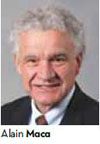|
Location: John F. Kennedy Int'l Airport, Terminal 4 Key Elements: Inline baggage system; 9 new wide-body gates; consolidated security checkpoint; redeveloped post-security concessions; new baggage carousels; expanded Customs and Border Protection areas; indoor taxi stand; Terminal 3 demolition Terminal Manager: JFK IAT Anchor Tenant: Delta Air Lines Cost: $1.2 billion Funding: Tax-exempt public bonds; passenger facility charges; Delta-backed New York City tax-exempt public financing; TSA grant Architect of Record: Skidmore, Owings & Merrill Delta Sky Club Architect: Corgan Associates Design Team: SOM/ARUP JV
General Contractors: Lend Lease; TBL IT/Electrical: Unity Electric Inline Baggage System: Vanderlande Industries
Electrical (inline baggage system): Millwright (inline baggage system): LMC Industrial Contractors Controls Design (inline baggage system): Brock Solutions Gearmotors: SEW EURODRIVE Security Monitoring: Diebold Next: Phase 2 will add 11 regional jet gates & 75,000 sq. ft. to Concourse B at an anticipated cost of nearly $200 million |
This is the first installment of a two-part series about Phase 1 of the expansion and redevelopment of Terminal 4 at John F. Kennedy International Airport (JFK). This article covers infrastructure improvements; Part 2, in our next issue, will chronicle the addition of nine wide-body gates in Concourse B, the new Delta Sky Club, and the development of post-security concessions.
The redevelopment and expansion of Terminal 4 at John F. Kennedy International Airport (JFK) will include two major phases, span multiple years and cost an estimated $1.4 billion. The massive project will transition the facility from a fully common-use terminal to a common-use terminal with Delta Air Lines as its anchor airline tenant.
The $1.2 billion Phase 1 of the project, which was nearing completion in April, expands the terminal from 1.5 million to 2 million square feet, creates a centralized security checkpoint, reorganizes concessions post-security and adds nine wide-body gates, a new inline baggage system, indoor taxi dispatching area and baggage claim carousels. Phase 1 will also include the demolition of Terminal 3, Delta's previous home.
Phase 2 will follow soon, adding 11 regional jet gates and 75,000 more square feet in Concourse B.
Last year, Terminal 4 was home to about 30 international and domestic airlines and served nearly 11 million passengers. It is managed and operated by JFK IAT, the only private, non-airline company selected by the Port Authority of New York and New Jersey to operate a terminal at JFK.
"This remarkable expansion represents a logical next step in realizing the long-term vision for our terminal," says JFK IAT President Alain Maca. "It enables JFK IAT to continue doing what we have been doing for more than 10 years: managing this landmark structure for nearly 30 airlines while at the same time facilitating changes and improvements that will enable the terminal to maximize the efficiency of its overall operation and boost its ability to serve the flying public."
A Look Back
Terminal 4 opened as a common-use terminal in May 2001. With up to 56 airlines, mostly international, working out of 16 gates over the past decade, JFK IAT relied on enplanements to pay down debt.
Although the common-use model worked well for JFK IAT, management realized early on that having an anchor tenant could bring financial benefits in the long term, explains Janice Holden, JFK IAT's vice president of airline relations and corporate communications.
Four months after Terminal 4 opened, 9/11 changed everything.
"We had a very beautiful building architecturally with a massive departure hall and an expansive retail and food and beverage area, but everything was pre-security," relates Holden.
With security checkpoints at the entrances of Terminal 4's two concourses, Holden likens the original configuration to a train station, where passengers wait in a grand terminal until just before departure time, when they enter the concourse. "With the fortification of security after 9/11, people wanted to get through Security early," she recalls. "But after they got onto the concourse, few services were available."
In 2008, JFK IAT reopened discussions it had initiated with Delta earlier in the decade about moving the airline's operations into Terminal 4. With operations dispersed between Terminal 2 and an aging Terminal 3, Delta was interested in finding a new home.
In 2010, JFK IAT, the Schiphol Group (its parent company), the Port Authority of New York and New Jersey, and Delta Air Lines reached an agreement that would make the airline the anchor tenant of Terminal 4. The agreement also allowed JFK IAT to embark on a large-scale terminal expansion and redevelopment project that would ultimately benefit all of the stakeholders.
Jos Nijhuis, CEO of Schiphol Group, describes the project in terms of the company's mission: "Our added value as a leading airport operator is our ability to harmonize the processes needed to achieve a world-class travel experience for all passengers and serve the airlines in a cost-effective and flexible way."
First Things First
JFK IAT understood that Terminal 4 would need to undergo major infrastructure improvements in order to provide efficient, high-quality services to travelers and tenants. Installing an inline baggage screening and sorting system was consequently at the top of its to-do list.
"Right after 9/11, we had to install CTX baggage screening machines at the end of each row of Check-in," recalls Holden. "They were huge – the size of minivans. Fortunately, we had the luxury of a very large departure hall and had room for them. Even though the machines got smaller with the advent of the CT-80s, they remained on the floor and not where we wanted them to be. We knew early on that we wanted to install a modern high-tech system."
 Vanderlande Industries secured the contract to install the new system. The two-year installation, which it completed in April, includes 10 automated CTX-9800 high-speed screening machines integrated into nearly 15,000 linear feet of conveyor. Bags are fed into the system from nine rows of ticket counters, one curbside check-in and two bag recheck conveyors. From there, it is sorted and fed to Concourse A or B. The system is capable of handling 6,500 bags per hour. Four high-capacity baggage make-up units were also added.
Vanderlande Industries secured the contract to install the new system. The two-year installation, which it completed in April, includes 10 automated CTX-9800 high-speed screening machines integrated into nearly 15,000 linear feet of conveyor. Bags are fed into the system from nine rows of ticket counters, one curbside check-in and two bag recheck conveyors. From there, it is sorted and fed to Concourse A or B. The system is capable of handling 6,500 bags per hour. Four high-capacity baggage make-up units were also added.
Guy Scialdone, Vanderlande's project manager, describes the project's unique challenges: "Airport terminals like Terminal 4 generally aren't built with expansion in mind because the price of real estate is so high … so there's not a lot of space for staging and phasing the work. Our challenge was to install a completely new system to replace an existing system without impacting current operations."
Vanderlande President Ewout Cassee likens the feat to "performing open heart surgery on a patient while he's running a marathon."
Under the terms of a seven-year $30.5 million contract with JFK IAT, Vanderlande Industries has stationed 32 permanent staff onsite to operate and maintain the system.
Consolidating Checkpoints
In keeping with the post-9/11 trend of moving airline lounges and concessions to the secure side of airports, JFK IAT redesigned passenger flow in Terminal 4. Two separate third floor security checkpoints were consolidated into a single, centralized checkpoint on the fourth floor.
The new consolidated security checkpoint includes 12 screening lanes and is expandable to 20. It also includes an exit lane and L3 Body Scanners, which are faster and considered less invasive than the terminal's previous equipment. Approximately 250 cameras provide surveillance throughout the area.
To accommodate the new checkpoint, JFK IAT built a deck over an open area on the fourth floor that overlooks retail shops on the third floor, explains Shawn Makinen, the company's vice president of Aviation Planning and Facility Management. A steel infrastructure supporting a deck of prefabricated concrete created the necessary additional square footage.
New power and data lines were needed to operate the new TSA equipment, and escalators and elevators were installed to direct travelers down to food/beverage and retail concessions on the third floor.
"It was a major project," Makinen reflects. "There were the everyday challenges of redirecting passengers while maintaining a safe, clean and well-lit environment throughout construction. We had to relocate concessions on the third floor as construction on the deck proceeded. Airline offices had to be moved. It impacted just about every area of the terminal."
Since opening in March, the new checkpoint has garnered positive feedback, reports Stacey Lora, JFK IAT's vice president of security.
"The transition went well, and the new layout is a success," she emphasizes. "It helps with traffic flow and creates greater efficiencies. We work closely with TSA to improve throughput. Our customers are enjoying having the airline lounges and shops now located beyond the security checkpoint."
Improving Arrivals
The renovation and reconfiguration of Terminal 4's first-floor Arrivals Hall was made with travel-weary customers in mind, note JFK IAT personnel.
Two extra large baggage claim carousels dedicated exclusively to domestic traffic make it easier for travelers to recheck baggage for international flights or claim baggage and exit the building. And the redesigned Customs and Border Protection (CBP) area features more stations to improve the flow of travelers through the area.
JFK IAT Chief Operating Officer Jim Fazio details the improvements: "The project delivers an improved arrivals process for our international passengers with the inclusion of an additional high-capacity international baggage claim carousel, 14 new CBP lanes and 18 Global Entry kiosks, bringing the total to 72 booths in the Primary Inspection Area in CBP – the largest capacity at JFK."
As Delta makes the move out of Terminal 3 and into Terminal 4, JFK IAT is working with government agencies to coordinate the shift of CBP agents into Terminal 4 to maximize efficiencies and minimize wait times, notes Fazio.
The Port Authority of New York and New Jersey partnered with the terminal management company to install the first indoor taxi stand at a New York City airport. Designed to enhance comfort and safety, Terminal 4 Taxi Central protects travelers from inclement weather and also addresses the airport's longstanding problem with unlicensed and unregulated taxis.
"JFK can be difficult to navigate, and we were concerned about providing a safe arrivals product for our passengers," relates Lora. "Increased presence of Port Authority security personnel will deter illicit activities, and the installation of additional security cameras equipped with enhanced recognition technology will monitor activity in the terminal."
Signage directs customers to the taxi dispatching area on the east side of the Arrivals Hall. The relocated taxi queuing area is adjacent to the dispatcher.
Some JFK IAT executives consider the indoor taxi stand a long overdue solution. "We hope (it) will become the new standard – not only at JFK, but at any airport facing similar challenges," says Maca. "I have seen this work at some of the world's most advanced airports … and I know with the right focus, it will be a success here."

 factsfigures
factsfigures
